Montessori for babies with Theresa from Montessori in Real Life
A new series all about Montessori for babies.
In our book The Montessori Baby we wanted to highlight families from around the world applying Montessori from birth. As there wasn’t space to fit in all their photos and the full interview with each of them, this is the perfect place to let you get to know these families even better.
Meet Theresa, Chris, D and S from Montessori in Real Life and you can follow them over on Instagram here. They are based in the North-West of the US.
1. How has Montessori helped you with your baby?
Montessori has allowed me to give my baby the space and tools to discover, communicate, and realize his own capabilities. It has also helped me to see him as a beautiful and unique individual, with different interests, strengths, and challenges than his sister.
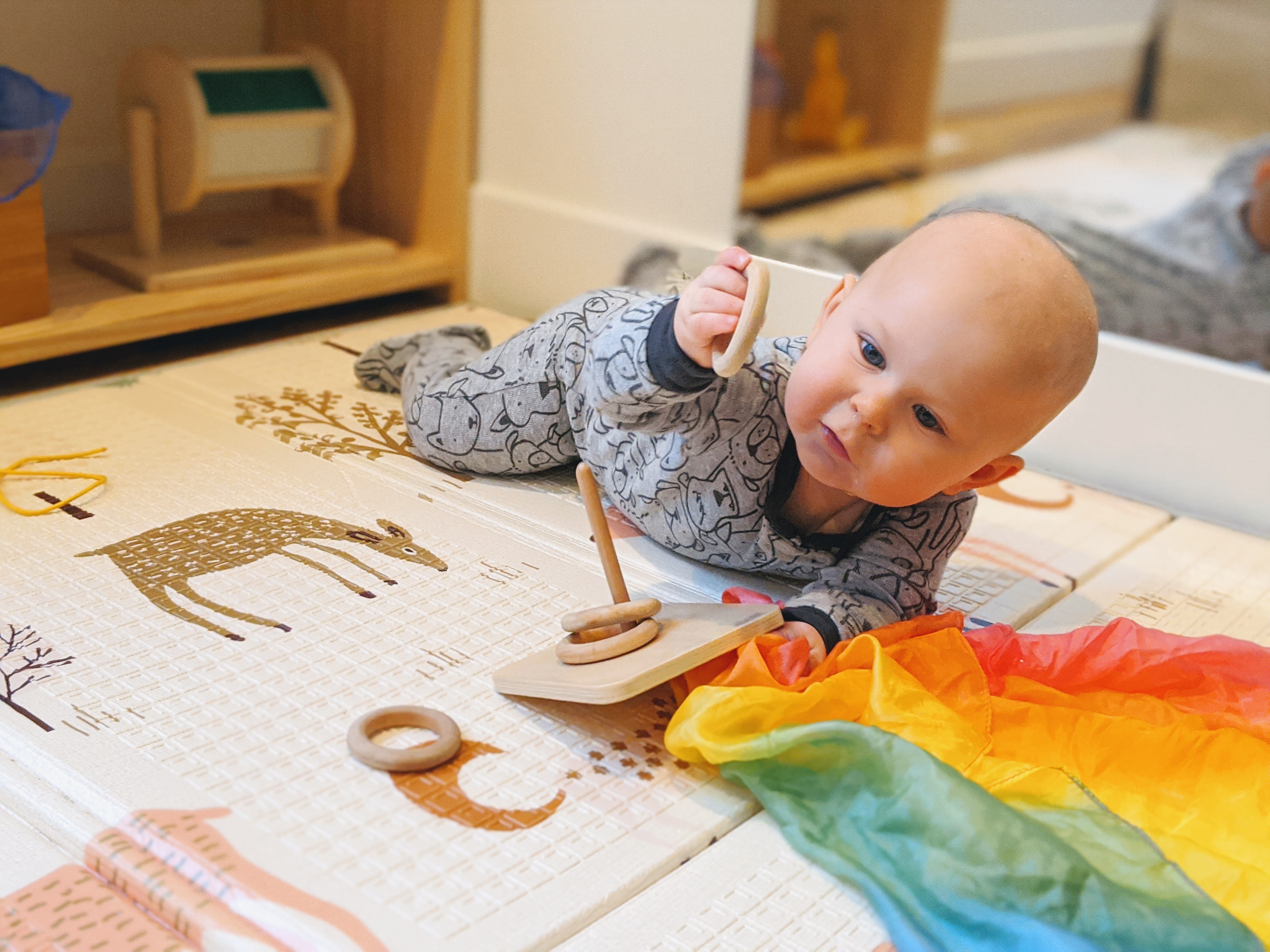
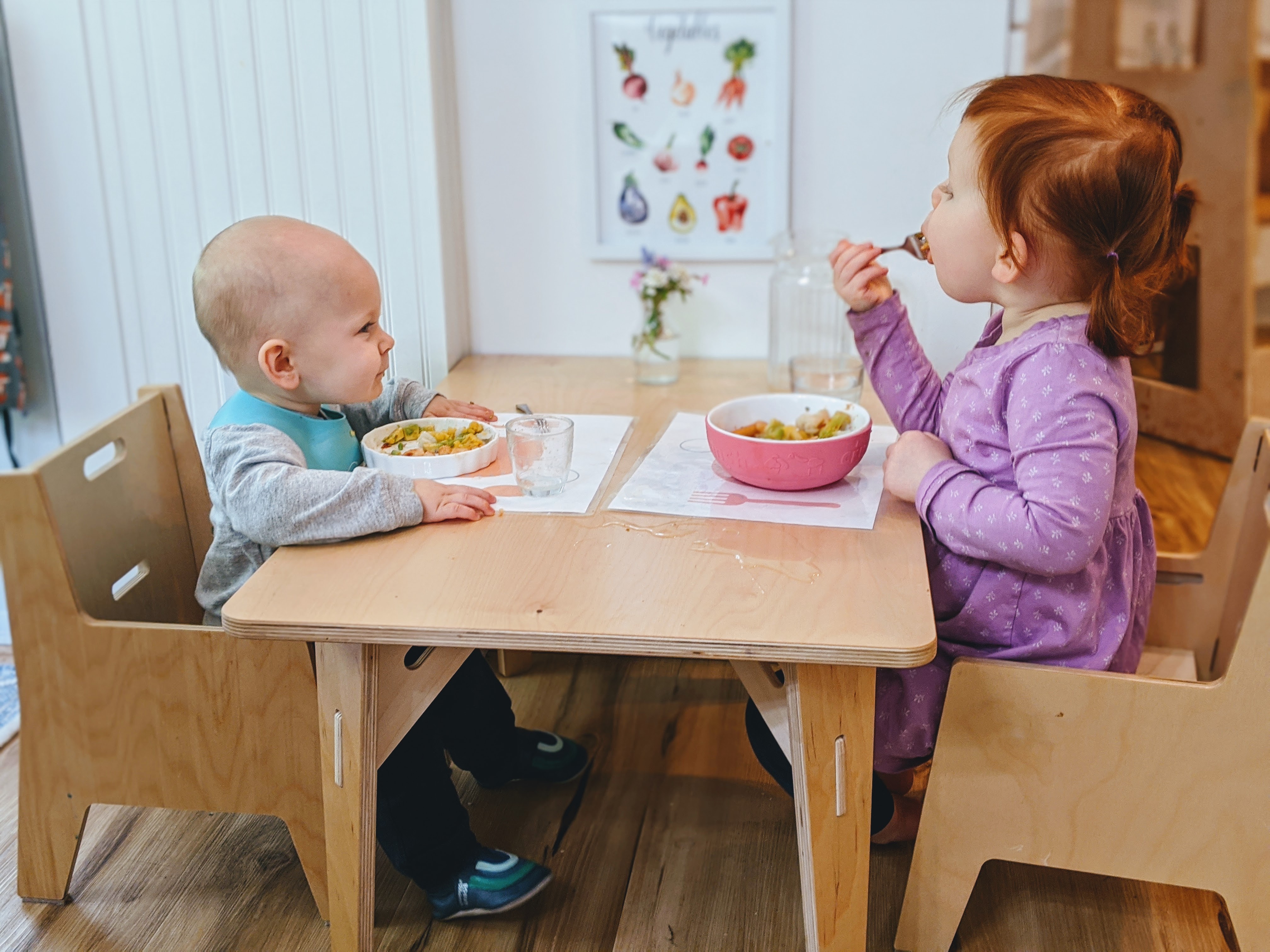
2. What were your favourite moments when they were a newborn?
My favorite moments were the quiet and calm minutes spent nursing, when we’d simply gaze at each other. There was nowhere we needed to be but right there. I still can’t get enough of that look of contentment right after nursing when he stretches his arms and beams up at me.
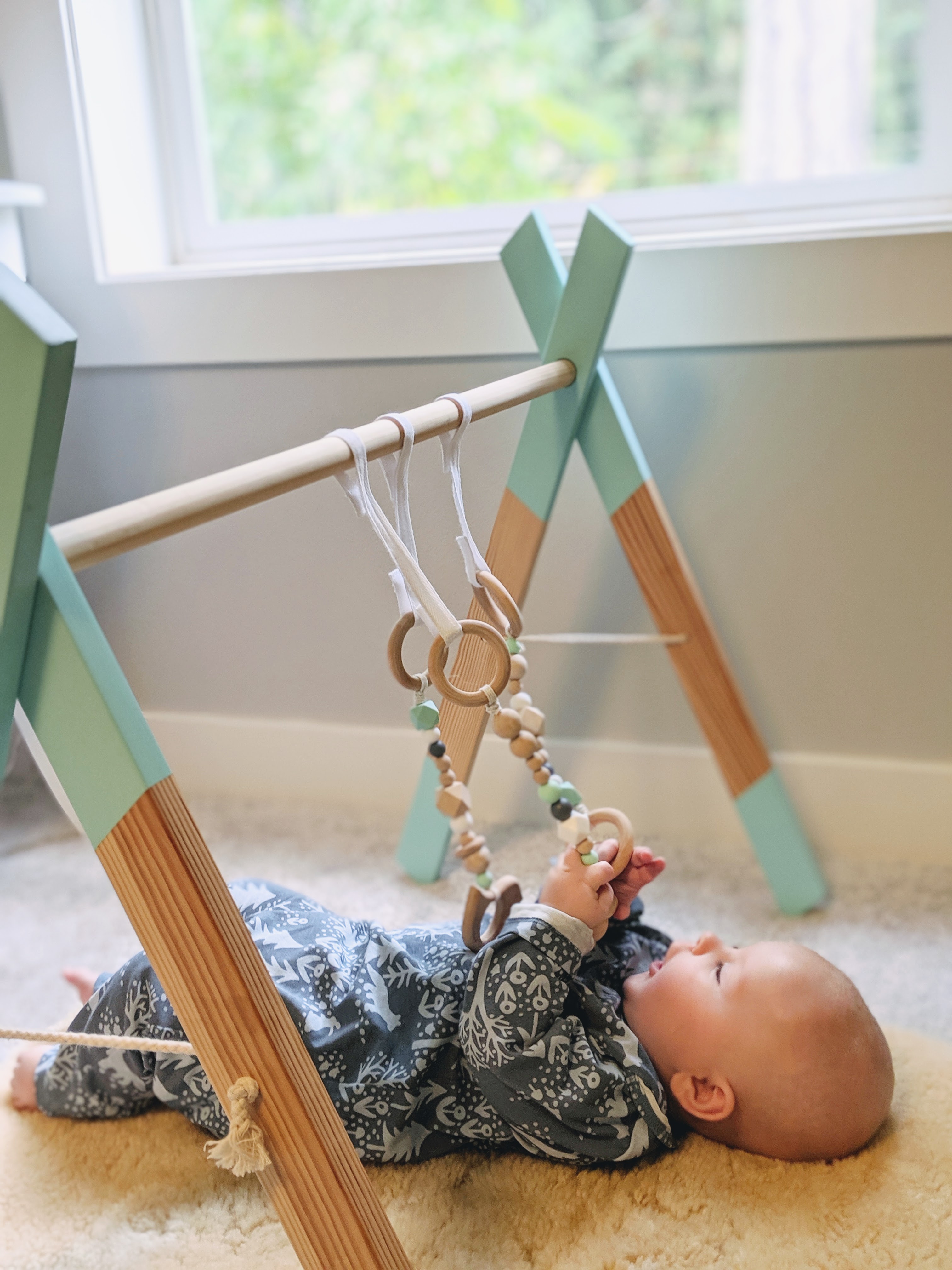

3. What were some of your baby’s favourite activities?
Both of my children were captivated by the butterfly mobile between two and three months of age. Once they began to grasp, they adored hanging tactile mobiles, such as ribbons, bells, and teething rings. A long-time favorite in the second half of the first year has been household objects of any kind, boxes that open and close, and simple DIY shakers!

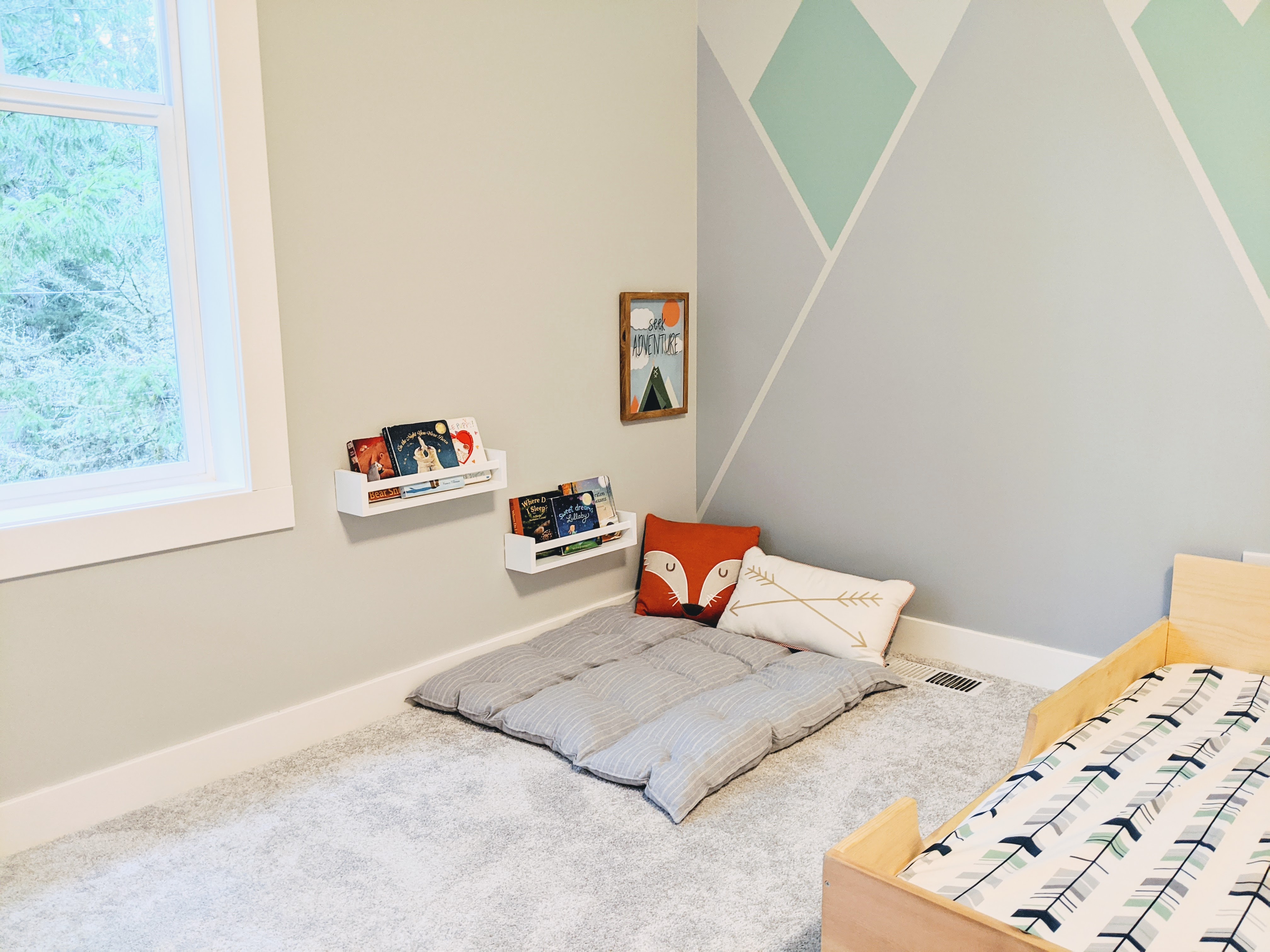
4. What do you wish you would have done differently?
I wish I would have worried less about developmental milestones. Even knowing that every child is different, there is a pressure on parents for your baby to be on the “right track”. I could have ignored that little voice in my head more often.
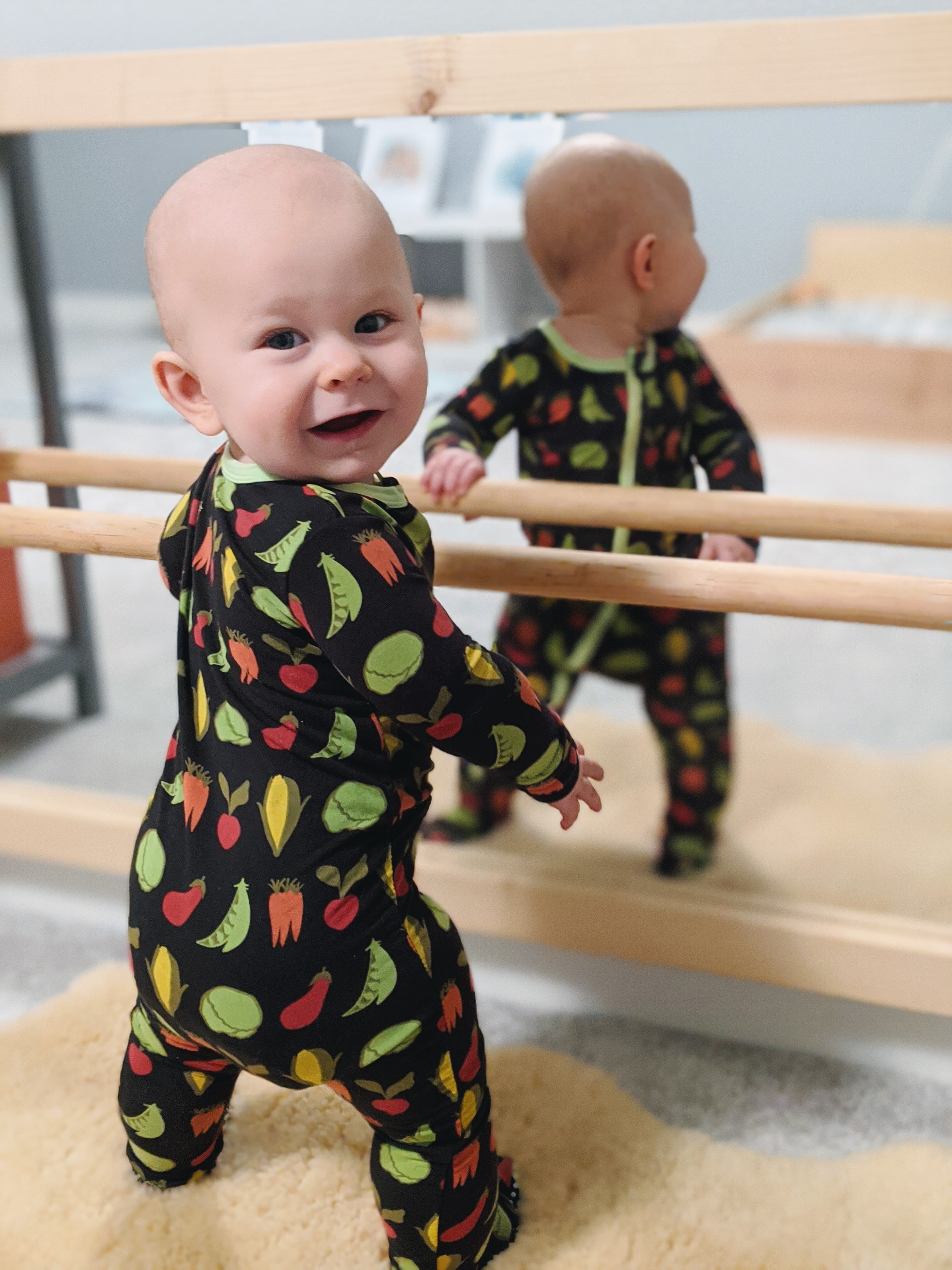
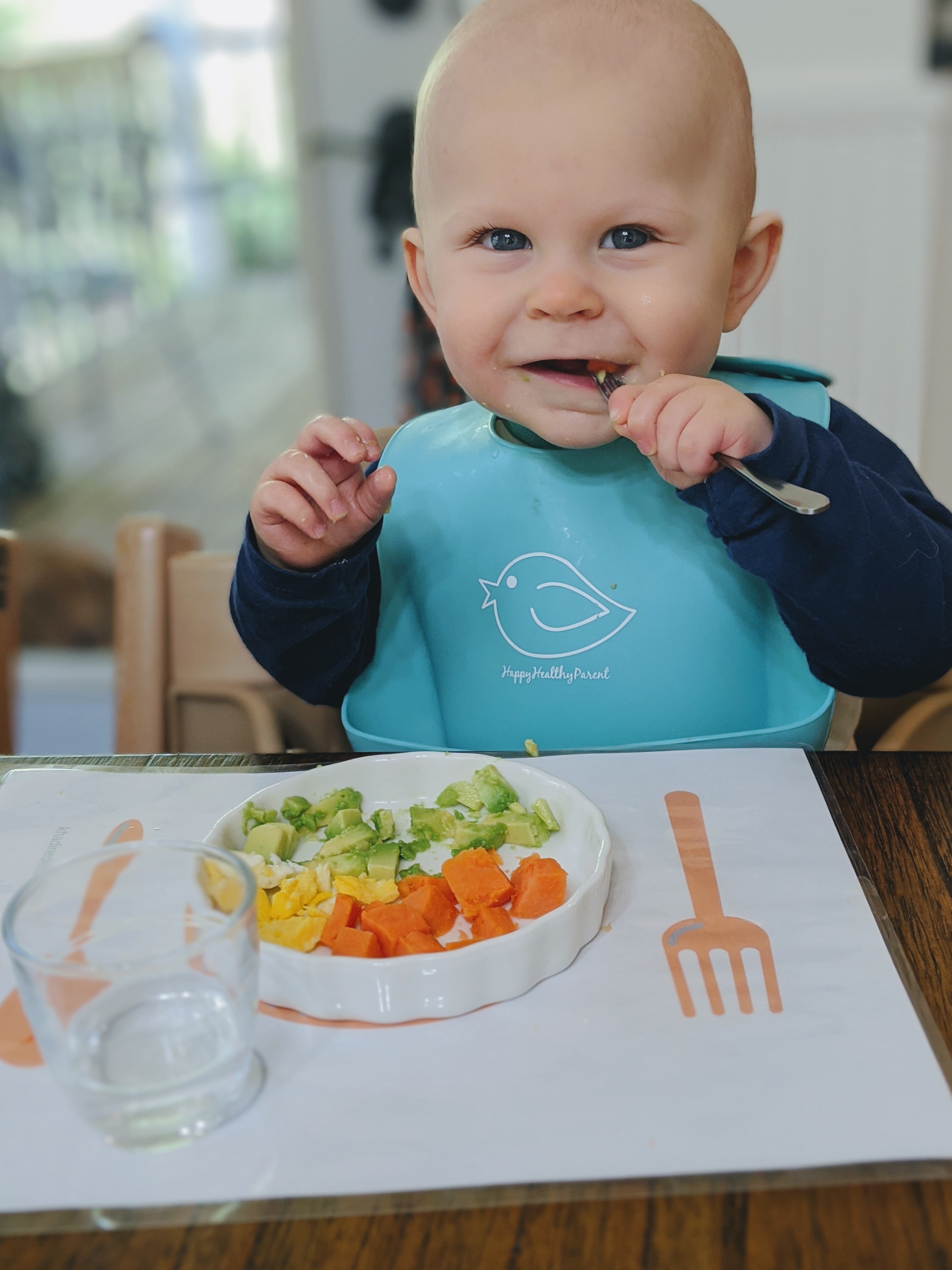
5. Any Montessori advice for new parents for the first 12 months?
Practice “the pause”. Listen to what your infant is communicating before you automatically step in to fix something. Often if we take a couple of deep breaths rather than immediately swoop up our infant, they figure out something for themselves or self soothe. We are also better able to understand what they are telling us if we listen rather than quiet them.
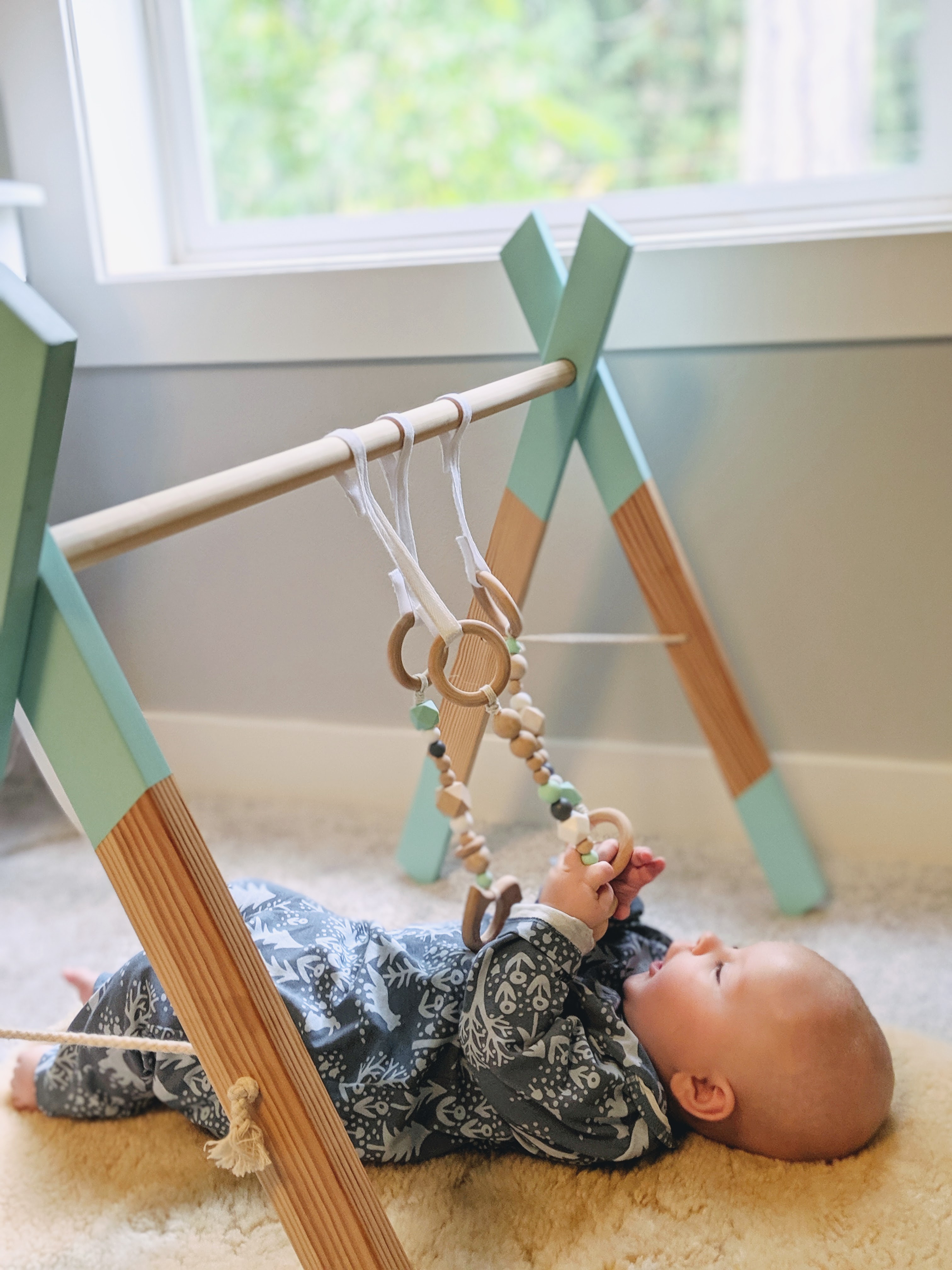
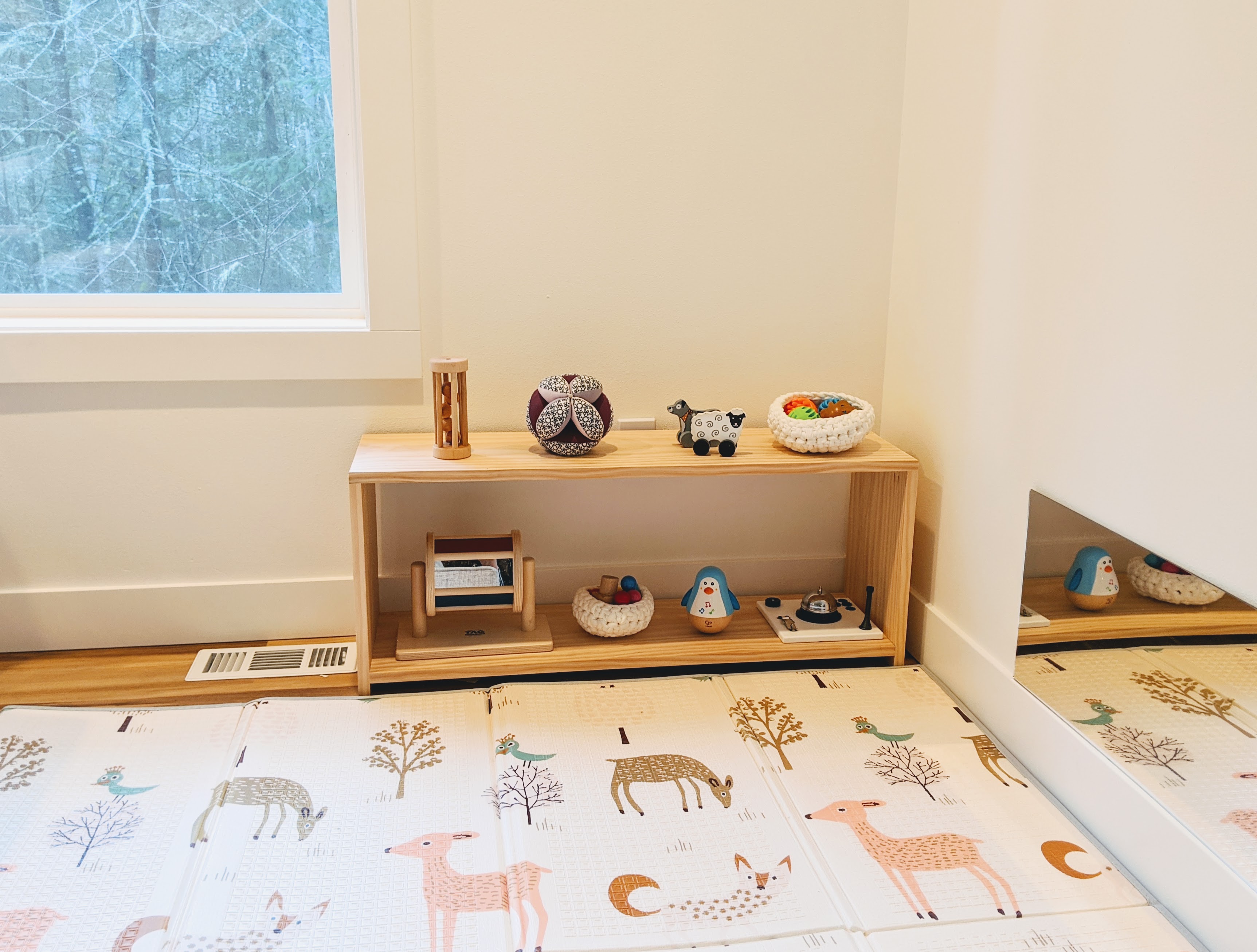
6. How did your home play a role in your baby’s first months/year?
Our home has played a role in allowing for freedom of movement and natural gross motor development. Since birth, we have placed our infant on a soft mat or rug on the floor to allow him to stretch and move without constraints. With a low mirror he has also been able to see his own movements as he learns to move and work in new ways, connecting the mind and body.
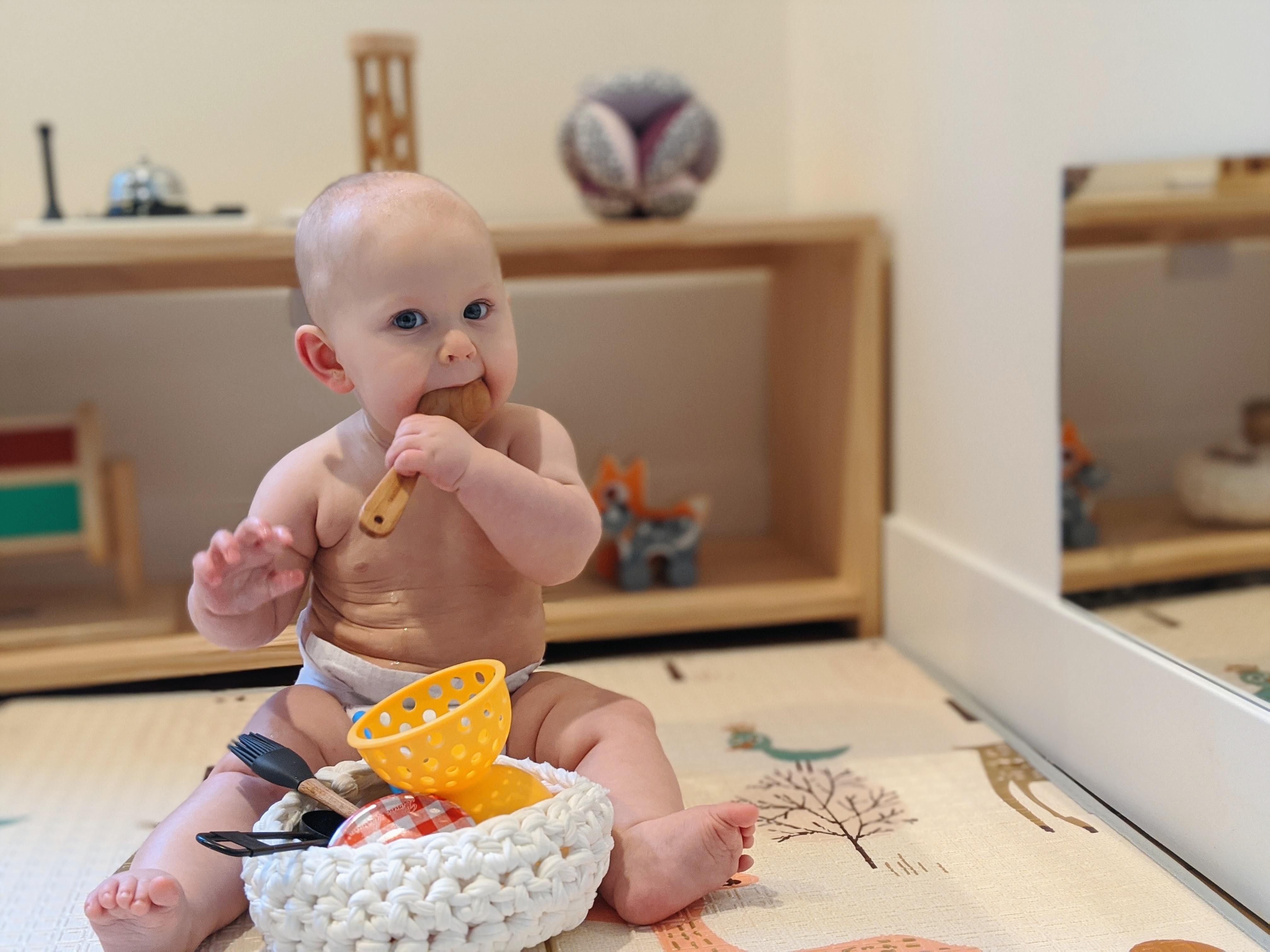
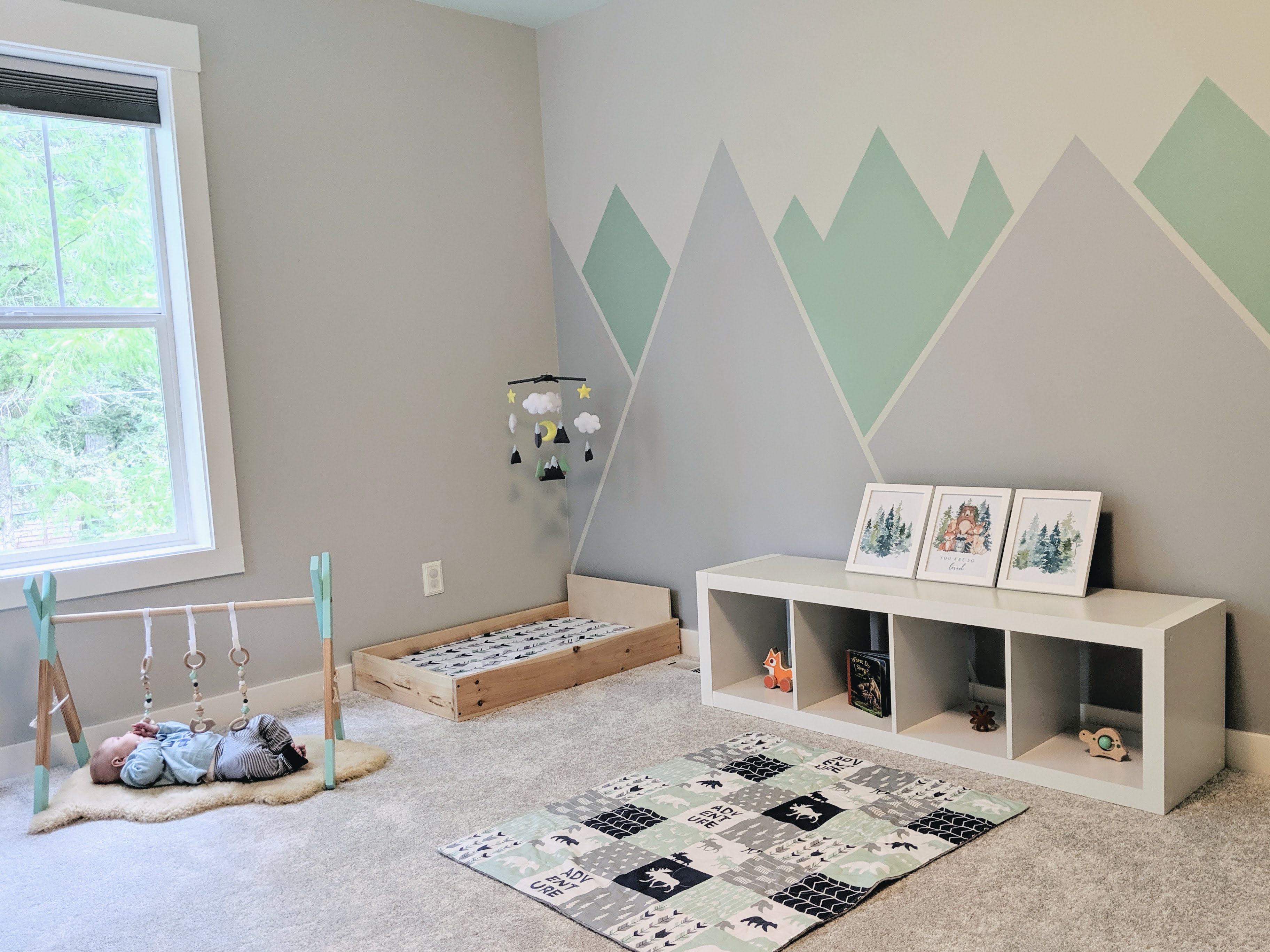
7. Did your baby have a regular rhythm to their days?
It took a couple of months to settle into a rhythm, but he has very much followed a rhythm since twelve weeks or so. I like to call it a rhythm rather than a schedule, because there has always been room for flexibility. Rather than follow the clock, we have followed a natural order of events each day. For example, though bedtime doesn’t happen at the exact same time each evening, the sequence is always bath, books, nursing, songs, and finally, sleep.
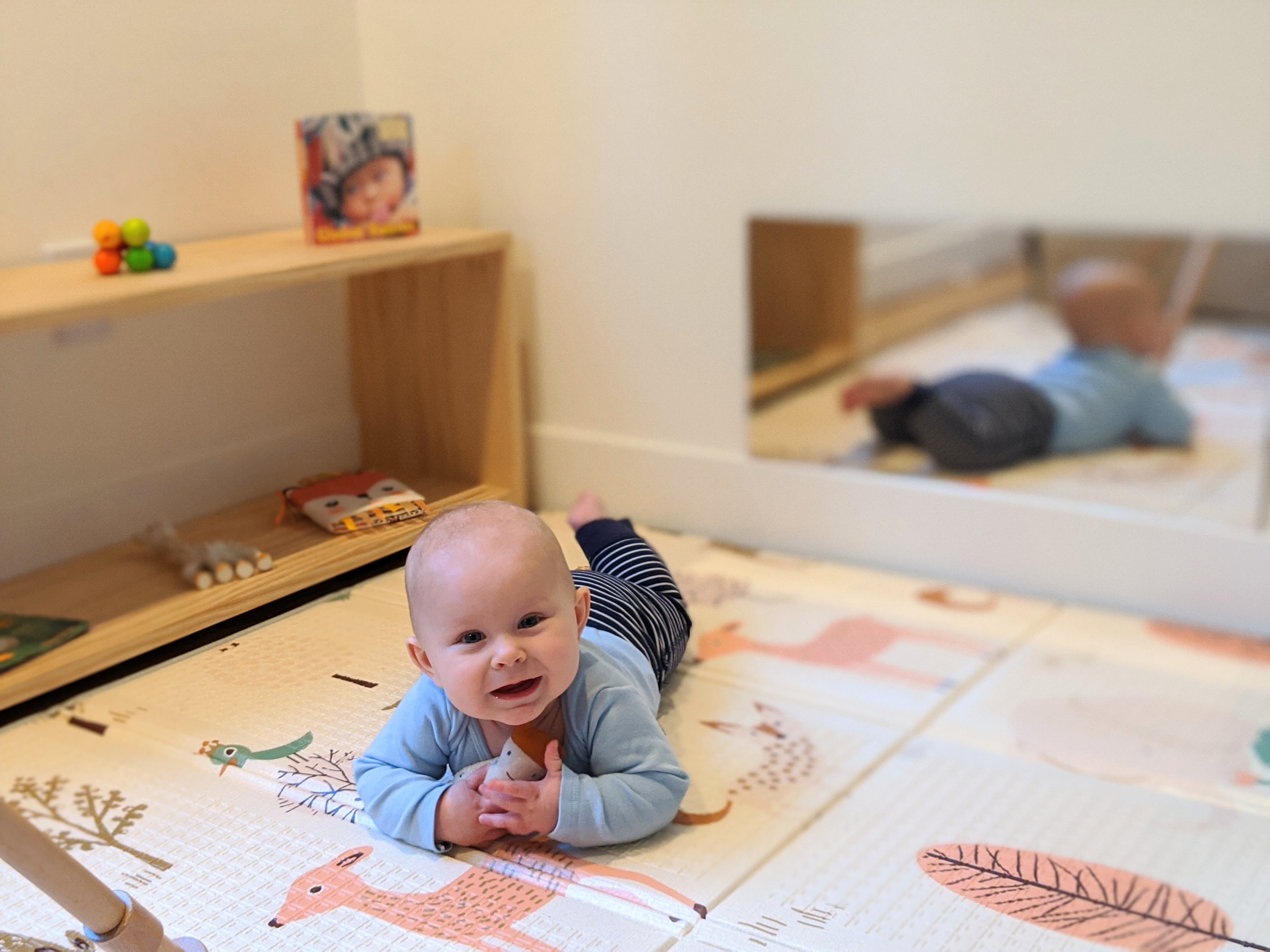
Thank you so much Theresa. I love how intentional we can be when we do Montessori for babies. Loved having you as part of The Montessori Baby book.
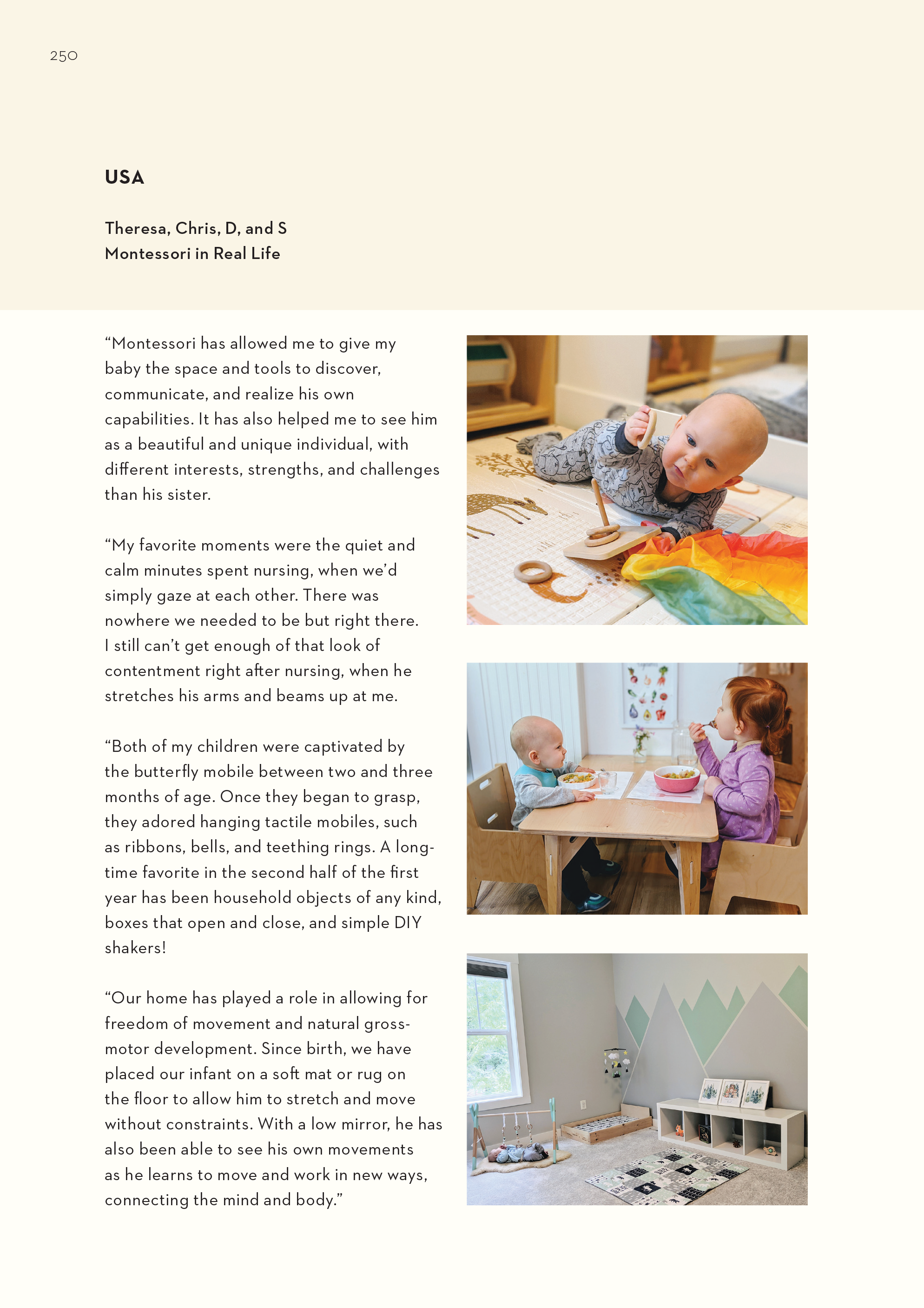
You can find more from this series here:
- Montessori for babies with Maria from Montessori Chapters
- Montessori for babies with Junnifa from Nduoma Montessori
- Montessori for babies with Theresa from Montessori in Real Life
- Montessori for babies with Neus of Montessorian by Heart
- Montessori for babies with Ahoefa from Raising Yannis
- Montessori for Babies with Jaya from Forest Montessori
- Montessori for babies with Nicole from The Kavanaugh Report
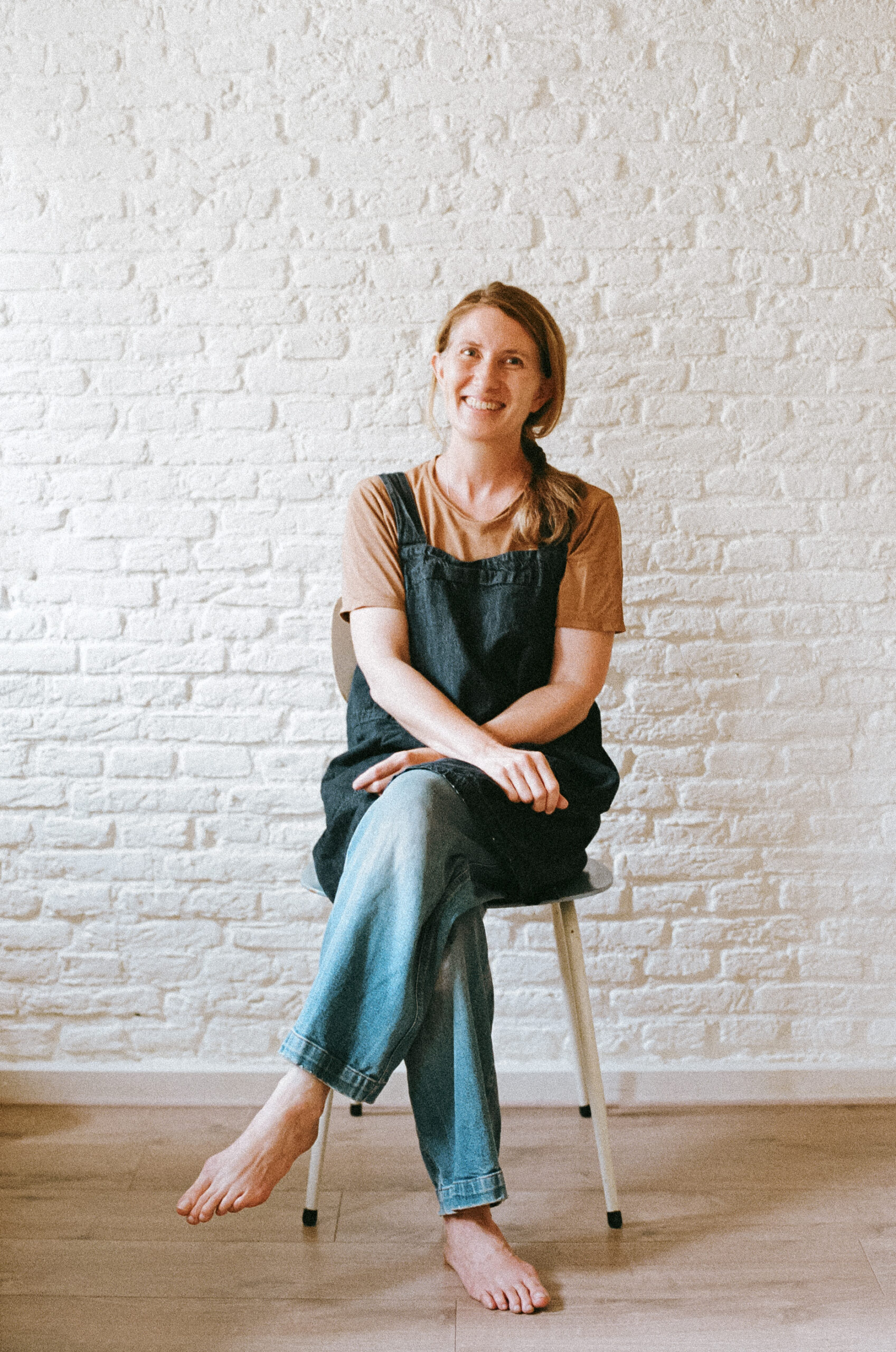
Simone Davies has more than 20 years’ experience as an AMI Montessori educator. Simone is the author of “The Montessori Toddler” and co-author of “The Montessori Baby” and “The Montessori Child” books, comprehensive guides to raising children in a Montessori way. She currently runs parent-child Montessori classes in Amsterdam at her school Jacaranda Tree Montessori. She also has a popular blog, instagram and podcast “The Montessori Notebook” and is mother to two young adults.